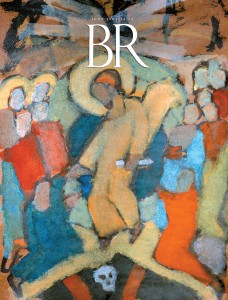
I recently heard a Yiddish folksong about what Eve ate in the Garden of Eden: “Chava hot dos Epfel gegessen,” the song goes—“Eve ate the apple.” Tempting, delicious and potentially dangerous, the apple is an appropriate fruit for this dramatic biblical scene: Its red color says “danger” (hence red is the color for “stop”), yet it is sweet inside. The problem is that the forbidden fruit in the Garden of Eden isn’t an apple at all. It’s a knowledge-of-good-and-evil fruit, which, according to the end of the story, none of us has ever seen.
In Genesis 2:16, God commands Adam: “You may eat from every tree of the Garden, but you may not eat from the tree of the knowledge of good and evil.” In the course of the story, Adam and Eve eat the fruit of this tree, whereupon “the eyes of both of them opened, and they knew that they were naked, and they sewed together fig leaves, which served them as loincloths” (Genesis 3:7). This fruit gives some kind of special knowledge, which includes a consciousness of sex, so that the two are embarrassed to be naked in front of each other and try to cover up. Somehow this type of knowledge makes them “like gods, knowing good and evil” (compare Genesis 3:5 and 3:22). This is an amazing and mysterious kind of fruit.
Already a library member? Log in here.
Institution user? Log in with your IP address.

